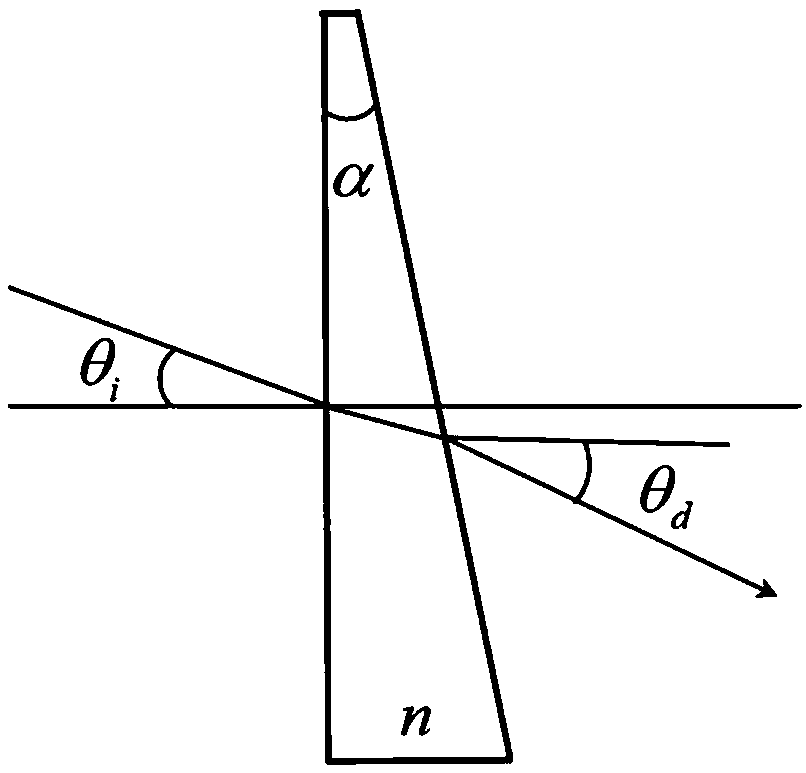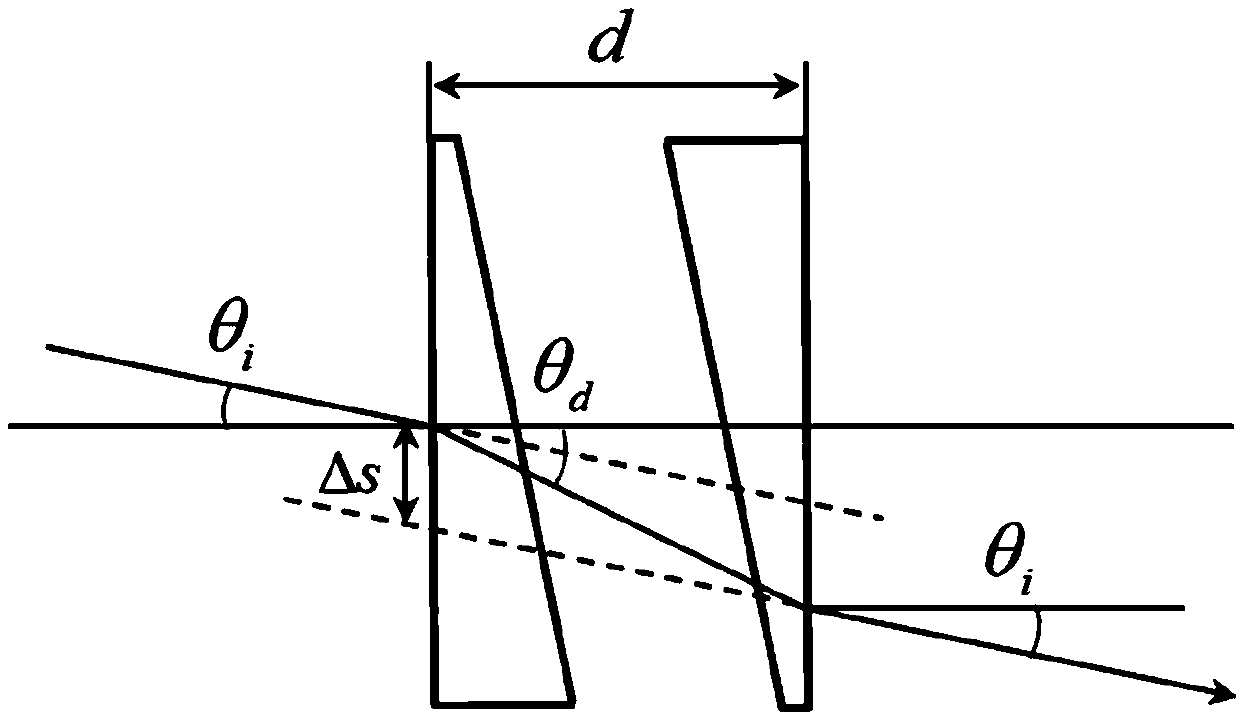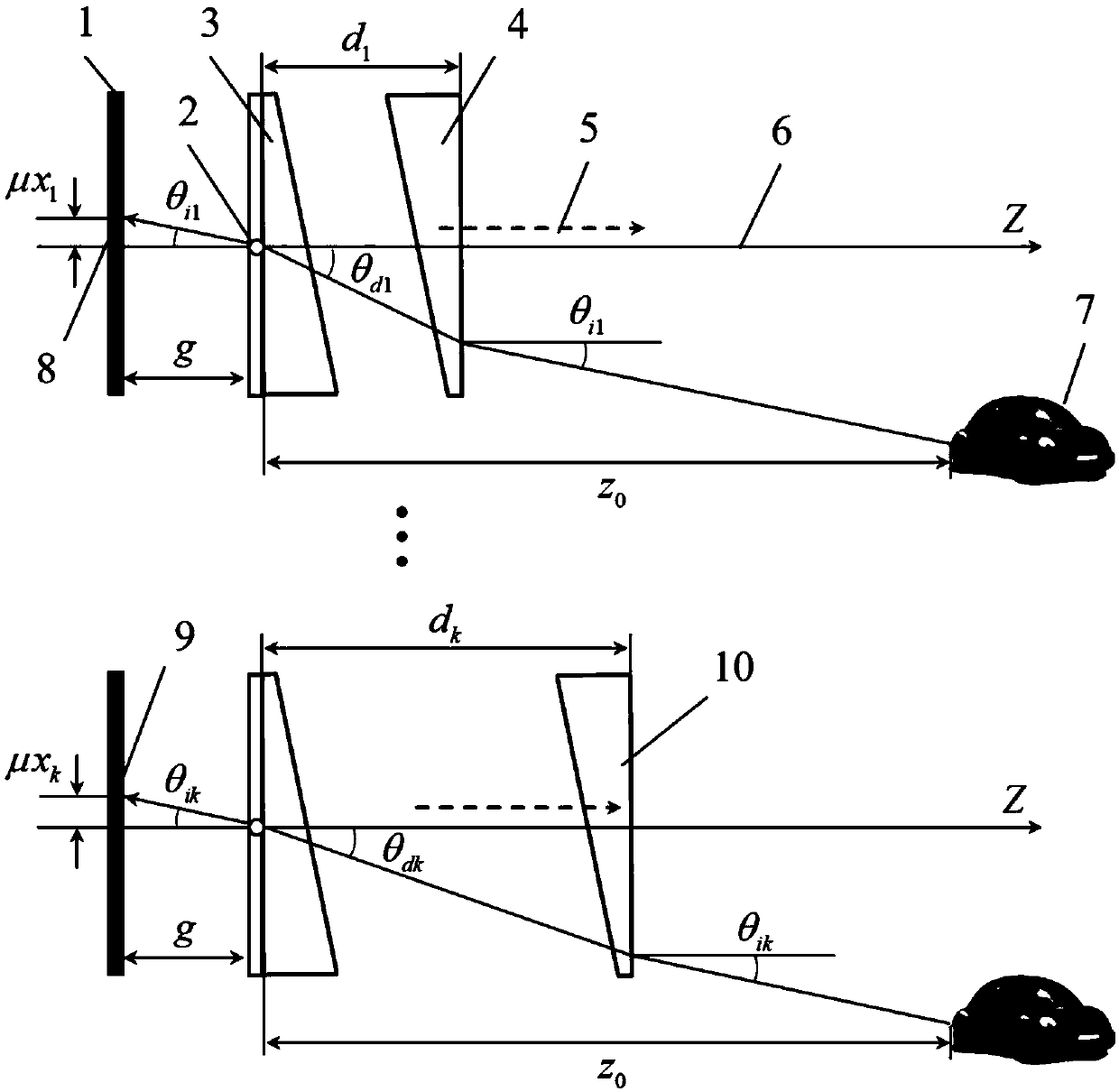Axial distributed three-dimensional imaging method based on double wedged prisms
A three-dimensional imaging, double-wedge technology, applied in the field of integrated imaging, can solve the problems such as the inability to meet the requirements of real-time dynamic display of integrated imaging of spatial scenes, the difficulty of camera spatial position and optical axis direction, and the limitation of the application of integrated imaging technology, and achieve effective three-dimensional images. Reconstruction, smear avoidance, simple structure effect
- Summary
- Abstract
- Description
- Claims
- Application Information
AI Technical Summary
Problems solved by technology
Method used
Image
Examples
Embodiment
[0034] The double wedge prism system is composed of two wedge prisms. The angle between the "plane" and "wedge plane" of the prism is called the wedge angle. According to the principle of refraction, the wedge prism can realize the deflection of the beam direction. In this embodiment, the wedge prism The position of the main section to represent the position of the prism, such as figure 1 shown. When the ray and the optical axis form θ i Angle incident on the vertical surface of the prism, the angle between the exit light of the wedge surface and the optical axis is θ d , for small wedge angle α and incident angle θ i In the smaller case, we can get by the refraction theorem
[0035] θ d ≈(n-1)α+θ i (1)
[0036] where n is the refractive index of the prism material.
[0037] For the double wedge prism system, the two prisms are arranged symmetrically to the center, that is, the plane of the first prism, the wedge plane of the first prism, the wedge plane of the second ...
PUM
 Login to View More
Login to View More Abstract
Description
Claims
Application Information
 Login to View More
Login to View More - R&D
- Intellectual Property
- Life Sciences
- Materials
- Tech Scout
- Unparalleled Data Quality
- Higher Quality Content
- 60% Fewer Hallucinations
Browse by: Latest US Patents, China's latest patents, Technical Efficacy Thesaurus, Application Domain, Technology Topic, Popular Technical Reports.
© 2025 PatSnap. All rights reserved.Legal|Privacy policy|Modern Slavery Act Transparency Statement|Sitemap|About US| Contact US: help@patsnap.com



